You can’t please all the people all of the time. Poet John Lyndgate supposedly made that statement hundreds of years ago, and while most would agree with him, the product planners at Chrysler Corporation in the early eighties certainly made heroic attempts to prove him wrong.
To be fair, Chrysler had little choice in the matter. With loans guaranteed by the U.S. government to be repaid, the brand-new K-platform had to serve as the basis for almost every kind of passenger vehicle in the Chrysler fleet, from sedans and sports cars to vans and limousines. And it worked! Chrysler’s success in making a full menu out of very few ingredients stands as a monument to creativity – and yet, I feel there were a few more holes in the market that Chrysler could have filled with the mighty K.
Spacer
The A To Z Of K
Look, I’m not going to sit here and wax eloquently about the styling of a Chrysler New Yorker or the Dodge Dynasty’s handling; it’s a well-known fact that few if any of the K-platform products ever really scared anyone at Honda or Volkswagen or BMW. Still, model-for-model, the K-car-based products gave customers of the eighties exactly what they were looking for at a reasonable price, complete with some qualities the rest of the Big Three didn’t fully match. Chrysler’s space efficiency was outstanding, and Mopar’s prescient push to use turbocharged fours in lieu of six- and eight-cylinder engines is only now being adopted by most of today’s internal-combustion engine makers.
Chrysler’s way out of the 1970s darkness began in 1981 with the Dodge Aries K and Plymouth Reliant K, a compact sedan and wagon on a new front-drive platform to replace the trouble-prone Aspen and Volare and compete favorably with the popular but equally trouble-prone General Motors X-Body cars like the Chevy Citation.

Notice that the Aries and Reliant gave you a station wagon option that the X-Cars never offered, and unlike GM’s offerings where you had to step up to a Buick or Oldsmobile to get the “formal” notchback sedan style that people wanted (the Chevy Citation and Pontiac Phoenix only offered hatchback four-doors that were falling out of favor with buyers by 1980), Chrysler let cheapskates look nattily notched on a budget.

I think the six people shown in this thing below would barely fit, but that’s impressive packaging, nonetheless. Look at those gas mileage figures on a carbureted, non-electric-hybrid car!

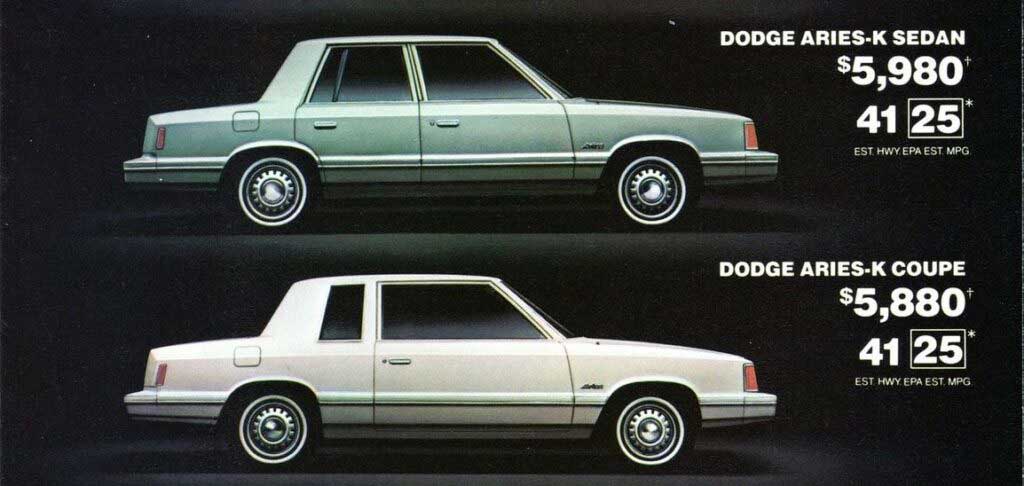
The K-car sold well in the immediate post-gas-crunch years and quickly spawned a whole mess of different vehicles. How many? I tried to count the other day and decided an illustration was in order. Here is the definitive K family tree, including the other body designations (G, P, etc.) that are all very much K-derived, no matter the letter assigned to them:

Whew! Making that took away an hour or two of my life I’ll never get back. Could you ever imagine a cargo van and a Maserati-powered sports coupe sharing the same platform? I couldn’t, but there’s the proof above. There really is something for everyone. The breadth of market coverage is mind-boggling, and it seems there is nothing Chrysler didn’t offer – but I feel opportunities remained.
My Maserati Holds 1, 2, 3, 5: Chrysler Maserati Salon De Lido
If there’s one K variant that most consider to be a failure, it’s the Maserati TC. The intent was certainly noble enough; Lee Iacocca’s long-time friend Alejandro DeTomaso controlled the storied trident brand at the time, and a collaboration logically could have brought some chutzpah to the one Big Three corporation that didn’t have a respected Lincoln or Cadillac flagship.
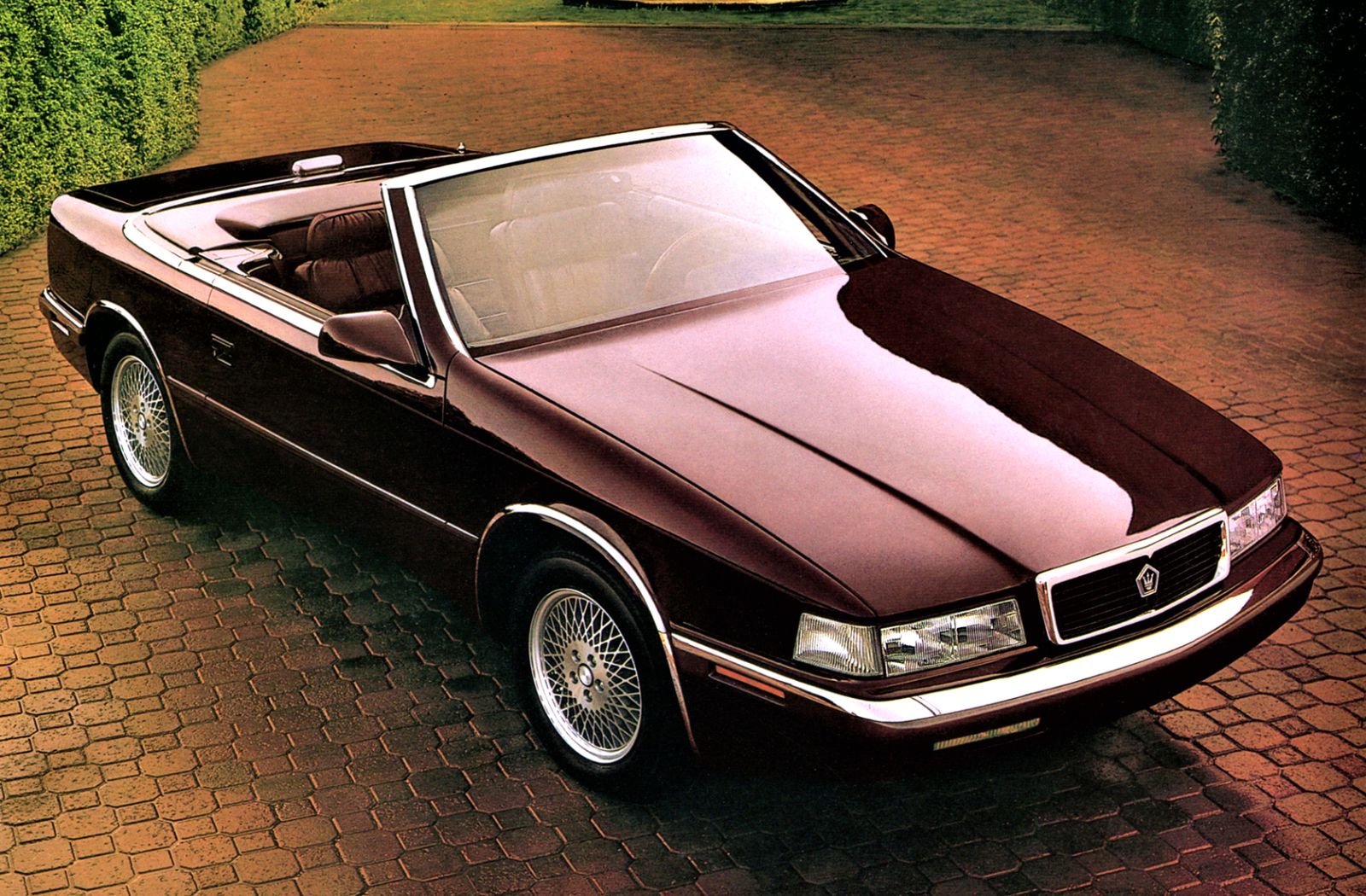
Lee had brought DeTomaso’s Pantera into Lincoln-Mercury dealerships back at his time with Ford. It was a fearsome machine that blew the Corvette into the weeds when it worked, which it never did. Iacocca seemed to have forgotten about all of the Pantera’s quality and production issues twenty years later, and Alejandro let him down again on this new project. The development delays of the Italian-built car caused the TC to be released after the new-for-1987 Lebaron Coupe it shared a resemblance with.
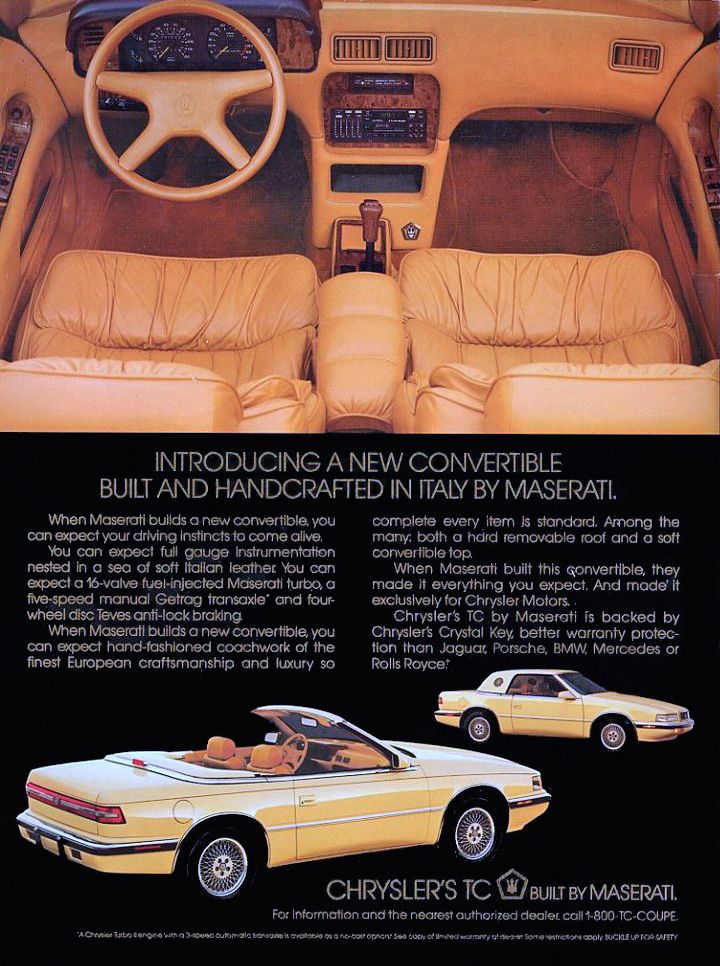
Instead of timing the TC’s release so LeBaron customers could say, “Hey, my new $15,000 Chrysler looks like that fancy $35,000 Maserati TC that was introduced two years ago,” Chrysler left potential TC customers to muse that the new “Maserati” looks like the Lebaron that’s already been on sale for a while and costs twenty grand less. Indeed, twenty grand less, and with very, very similar mechanical components, including a Dodge Daytona-sourced Turbo II four or a Mitsubishi V6 (with the exception of the 500 TCs equipped with a Maserati-built 16-valve motor and Gertrag 5 speed).

The TC’s biggest problem was all the wannabe-Mercedes-SL two-seat touring cars from the Buick Reatta convertible to the Cadillac Allante all the way up the 2000s T-Bird revival turned out to be sales duds. Despite plans for 5000 to 10,000 units a year, Chrysler only managed to move 7,300 TCs over three years. Honestly, you have to wonder if the Chrysler-Maserati mashup would have found more acceptance if it were something other than a coupe with a funky porthole window in the removable hardtop.
Why not a luxury sedan? A Maserati-branded sedan sold through a Chrysler store in the late eighties almost certainly would have sold better. Maserati’s own Biturbo series (like the 425 4-door shown below) was getting long in the tooth by now, and production ceased in 1989 anyway.

Thirty-five grand was a chunk of change in 1989, but wouldn’t you consider a hand-crafted leather-lined Italian boutique four-door for the same price as a smaller Mercedes or BMW featuring the interior ambiance of an operating room? If it had the stick and Maserati-massaged mill under the hood, I certainly would. Presenting the Chrysler-Maserati Salon Di Lido; yeah, it was Iacocca’s baby, so let’s name it after him.

Proportionally, it seems to work better than the coupe, which looks rather stumpy, particularly with the hardtop in place.

Like the TC, it looks far less Milan than it does Michigan, but that’s where the buyers of this thing were. If Iacocca was aiming for five to ten thousand units per year in sales, a four-door executive car with an exotic name and lavish interior could likely have found at least that many buyers wanting to upstage other members of the foursome at a country club.
K Hits The Trails: Dodge K-Cross
Most Autopians are aware that American Motors pioneered the modern all-wheel drive crossover formula with the 1980 Eagle, but it took forever and a day for others to follow suit. Here would have been a perfect opportunity for what was usually the least of the Big 3 to step in.
The original Eagle bit the dust in 1988 after Iacocca’s takeover of AMC, yet a natural successor could have been made rather easily. Chrysler debuted all-wheel-drive K-based vehicles in 1992 with their minivans, but as a testbed for this system, they might have tried something a few years sooner.
Remember the original Aries and Reliant Ks? These would disappear after 1989, but in a move similar to AMC’s reanimation of the Hornet/Concord to make the Eagle, the poor old K-car wagons might have gotten a new lease on life. With the new all-wheel-drive system installed, raised ground clearance, fender flares encasing bigger tires, and a new front clip, the Aries or Reliant station wagon would become the K-Cross. Mildly off-road capable, this might have been a Subaru Outback half a decade early. I’d love to see one lifted even more and sporting a push bar.

Here’s an animation of the old warhorse wagon turned into the K-Cross:
It’s boxy-frumpy looking, but while some companies actually started from scratch to make an all-new square-rigged car, Chrysler had one sitting right there about to be retired.
Putting The K In Pickups: Dodge Wayfairer
No pickup trucks on the K-family tree? How can that be? Chrysler did give us a mini-El Camino with the Omni-based Rampage and Scamp, but it was a bit more style-over-substance than a real pickup. I remember reading a quote from some Mopar person that after every pool cleaner in California bought one, the market dried up.

An Aries/Reliant-based pickup would be far more workmanlike, something Hank Hill might drive. Here’s the Dodge Wayfairer, still a small load carrier but in a much more usable size. Imagine a Toyota Hilux-sized machine but with a more car-like chassis, as well as an available bench seat to allow for (tight) three-across seating.

A leaf-sprung axle in back would allow for more cargo weight, but even if Chrysler popped for a V6 option, you wouldn’t be going anywhere fast.
I’m showing a cab and bed as a unit, but if they were separate as on a typical pickup truck, imagine the things Chrysler could have offered. Flatbeds, utility units for tradesman, even a camper that Mercedes Streeter would be writing about thirty-five years later … I’ve shown a few rough scribbles for a few of these things, but the list could go on for this El Aries or Reliantero.

Let’s Hear Your Ideas, K?
It’s rather a shame today that seemingly over half of the cars on the road are crossover wagons, and a large chunk of the rest are large pickups. Thirty or forty years ago, there was a market for all sorts of different vehicles, and Chrysler hit almost all of them with one platform.
You guys know the K-chassis ingredients, right? There have to be other possibilities for this ambidextrous chassis that were never explored. What are some other things that Chrysler missed out on making? Let us know!

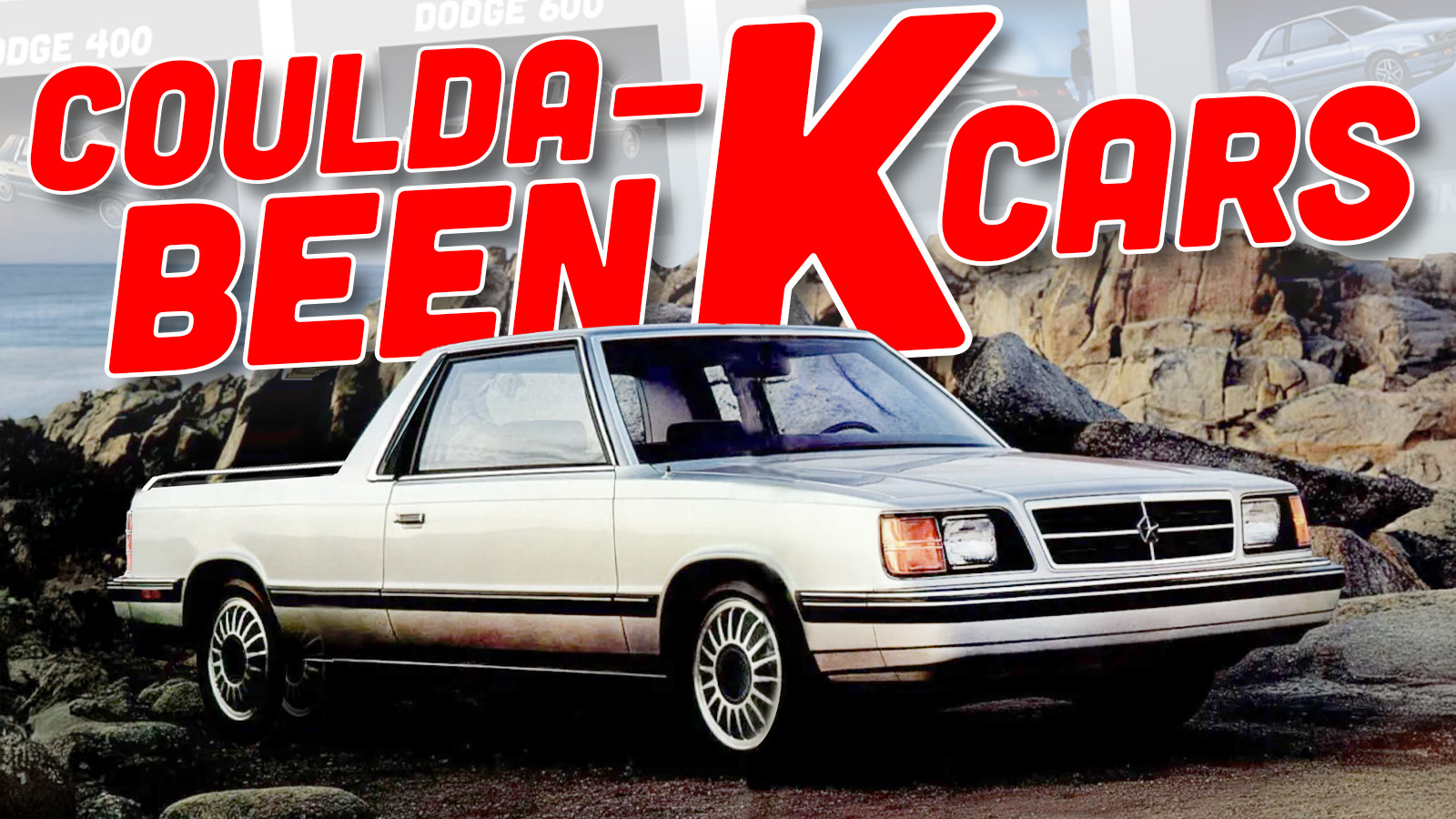
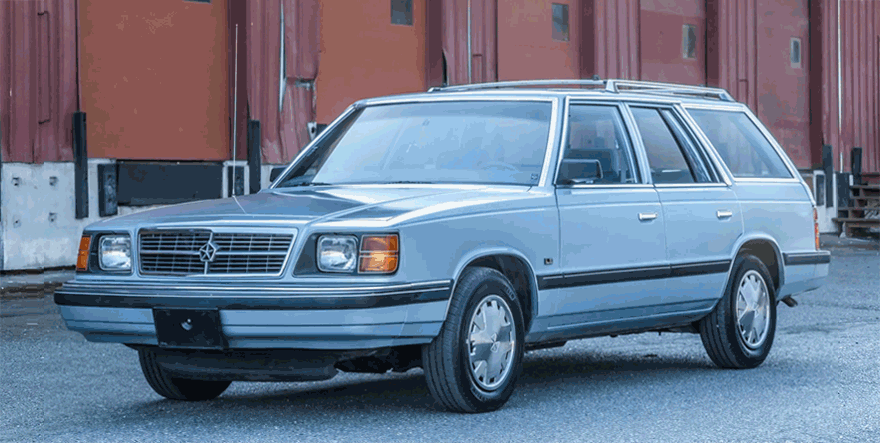




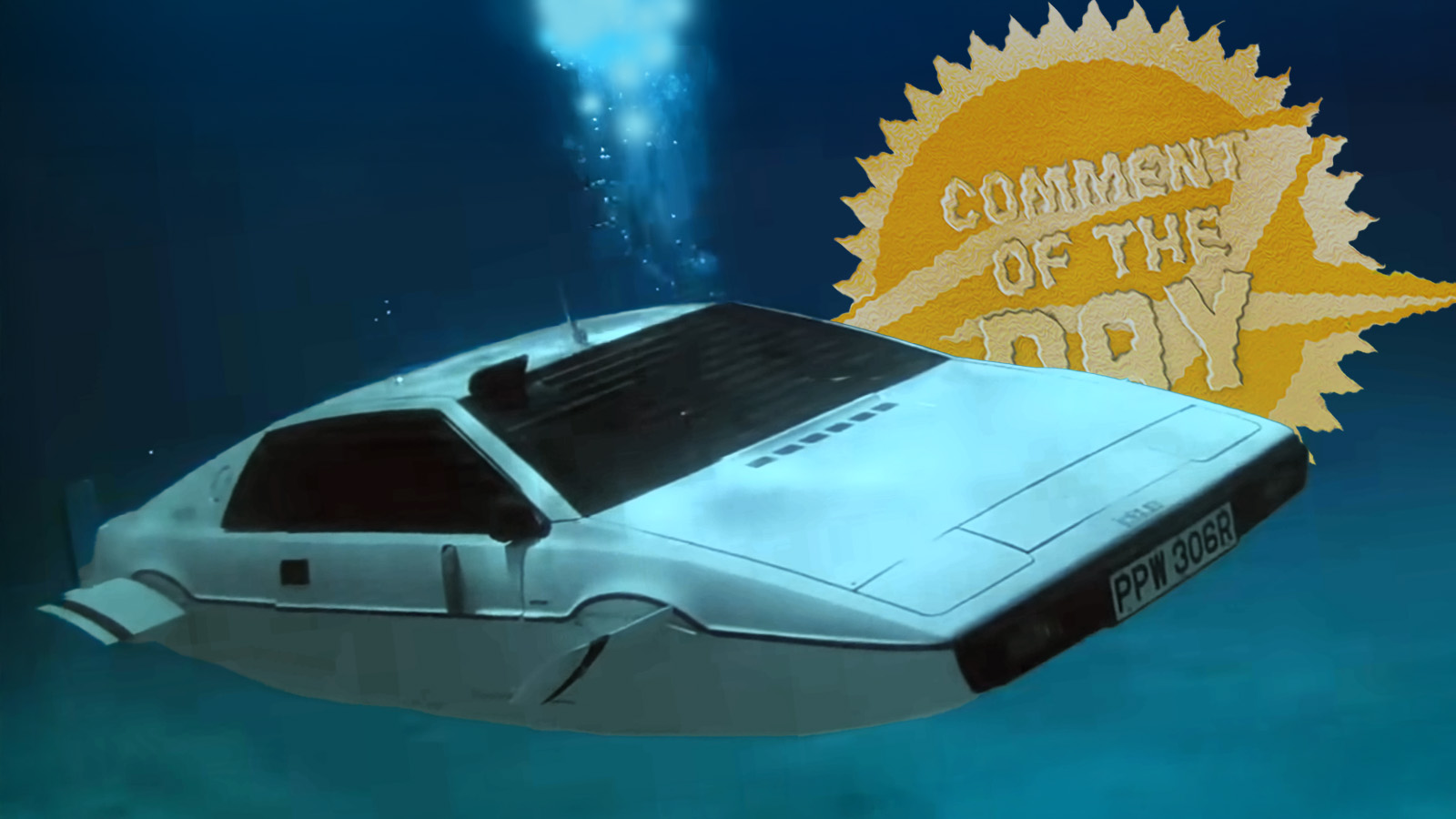


Cut the G-platform (Daytona and Laser) down even further into a lightweight 2-seat roadster, benchmarked against Triumphs and MGs. A sort of proto-Pontiac Solstice, built by raiding the parts bin as much as possible. Someone else here suggested turning the drivetrain around for a mid-engine mount like the Fiero, and that could work. But you wouldn’t have to if you wanted to save on engineering. Just eliminate the back seat and trunk.
You’re comment reminds me of the Consulier GTP, with it’s K drivetrain in the mid-rear.
The Wayfarer name was used for Valiant utes here in Australia – we did have Dodge utes, that were ‘stripper’ versions of the Valiant utes (painted bumpers, no dash padding etc) but the Wayfarer name was never applied to them.
The AWD experiment started in the 1991 MY for the minivans, had a ’91 built in January that sat on the lot for 6 months before we traded up from an ’84, this was back when you were measuring turnover sales of the minivans in weeks, sometime 30 days or less. Cost was a big hurtle, they priced the AWD about $1500 over FWD. Was a great rig, could not get it stuck, and we tried. Aside from an UltrDrive experience (4 that I had over time all failed near 100K), loved it.
I’m a Brit, so I only had a vague idea of what K cars were, and this is the first time I’ve actually seen pictures of them together.
Damn, every single one of them was ugly.
(Some of the vans were ok I suppose)
Give that K car platform the Amphicar treatment! I’d guess a few regular K cars ended up as unintentional test units over the years with poor results.
This is beneath your ability of course, but my tastes are much more modest – I’d love to see what the Lebaron GTS or Lancer would look like with a proper Euro style hatch, not the actual, looks-like-a-trunk setup they had. Chrysler’s refusal to go all in here always disappointed me.
Its amazing we thought baggy ass ruched leather was a good style. Also, its funny how those K cars came with rear end sag as standard.
Also, also, was there ever an AWD on any K platform? Of all those cars in the table I cant think of one with AWD as a trim.
Minivans
That Salon Di Lido looks a lot like the later Cadillac Seville STS/SLS. They would have had Cadillac scrambling for a new design direction if that came out.
I love the Chrysler-Maserati Salon Di Lido! What a huge improvement on the TC that would have been. I had a friend who had a high mile LeBaron GTS. Despite its painful interior and build quality, it was a surprisingly good road car, with a sophisticated feel that was more European than the other American offerings of the era. It makes me think a Chrysler-Maserati Salon Di Lido could have been a more competitive offering against other sedans, than the TC ever was against anything.
Red Green approves of this post.
If the women don’t find you handsome, at least they can find you handy.